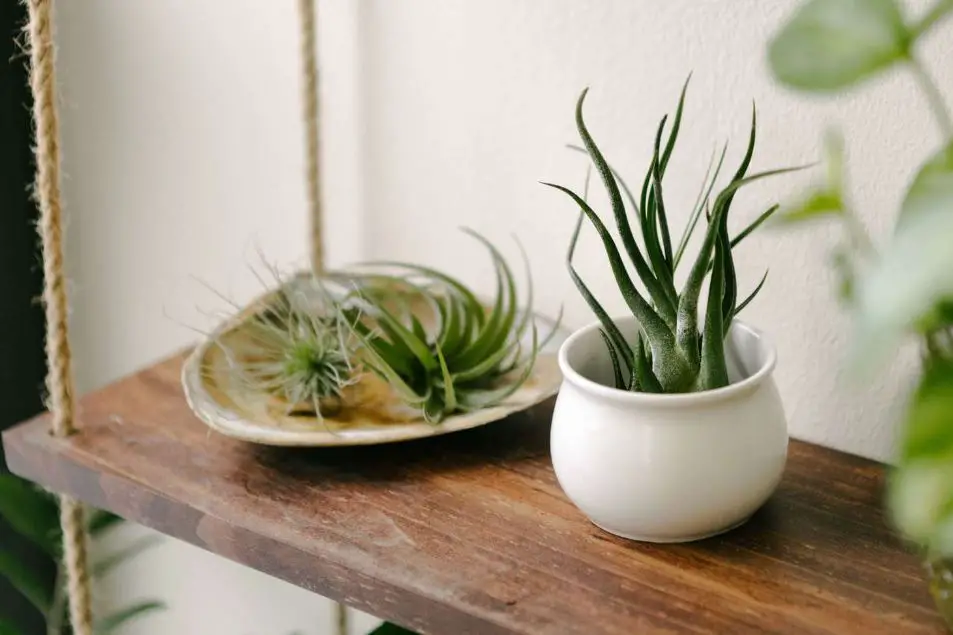One of the simpler plants to cultivate is a tillandsia, sometimes known as an air plant. They are ideal for beginning gardeners who wish to dabble with houseplants. Air plants are epiphytic plants that do not even need soil, so caring for them does not need much understanding. There are several methods to showcase their various shapes. The little plants could generate offsets and blossom with luck and patience.
Epiphytes are plants that attach themselves to other plants or building surfaces. They merely utilize the other plant as an anchor instead of becoming parasitic. Most tillandsia species live in tropical woods and are linked to bromeliads. Tillandsia, often known as air plants, have more than 500 varieties, many of which may be grown at home. They have become more popular recently, perhaps due to the ease of maintenance needed for air plants.

What are Air Plants?
Via the use of their roots, air plants attach to other plants or surfaces. Like other plants, their roots do not absorb moisture and nutrients. Instead, the plant draws moisture from the atmosphere while the leaves capture debris and other elements to provide nutrients.
Mesic and xeric air plants are the two primary varieties. High-humidity environments are home to mesic plants, whereas desert-like zones are home to xeric plants. Although xeric air plants have grey, fuzzy leaves bigger than mesic foliage, mesic plants often have greener, cupped leaves. The plant can now absorb moisture and light from a larger surface area.
The majority of Tillandsia is USDA zone 9 hardy. However, they grow well indoors in any climate. While there is a huge variety in leaf color and form, most are pointed and slightly curved. The plant can absorb its requirements from the air thanks to the small scales on all the leaves.
How to Care for Air Plants
The demands of a tillandsia are as simple as they come regarding upkeep. The xeric cultivars are more forgiving and simpler to cultivate for many producers since they are better acclimated to low moisture environments. But, if either kind is placed in strong, indirect light near an eastern or western window, it should grow.
The plant will thrive in a southern-facing window during the colder seasons but may suffer from scorched leaves in the summer. These plants thrive in environments that range from 65 to 85 degrees F (18 to 30 C) in the house throughout the day. Over small periods, they can endure temperatures of 50 degrees Fahrenheit (10 degrees Celsius).
The plant will thrive in a southern-facing window during the colder seasons but may suffer from scorched leaves in the summer. These plants thrive in environments that range from 65 to 85 degrees F (18 to 30 C) in the house throughout the day. Over small periods, they can endure temperatures of 50 degrees Fahrenheit (10 degrees Celsius).
Watering Air Plants
Tillandsia will want more hydration in the house, just like any other plant. Most houses tend to be dry, particularly in the winter. Every other day misting will be good for xeric plants. More moisture is required for mesic plants. Two times each week, they may be washed with water. Another technique to hydrate them is giving the plant a 10- to 20-minute bath in lukewarm water weekly. If the plant needs more regular soakings, keep a close eye on the leaves. The tops of underwatered air plants may become brown. The leaves of an overwatered plant will curl more violently.
Chlorine and other substances in tap water may irritate air plants. Moreover, neither excessively hot nor cold water should be offered to them. The best choice is bottled or distilled water at room temperature. These plants will thrive with the ideal ratio of additional light and water and do not need fertilizer.

